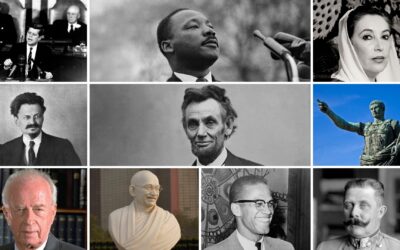The Non-Aligned Movement: The Third Voice Amidst Cold Winds
The 20th century unfolded with two giants glaring across vast landscapes, each wanting to mold the world in its own ideological image. The US and the USSR: the symbols of the free West and the communist East, the frontiers of the Cold War. But beneath their long shadows, another voice rose — one that wasn’t eager to join either camp but wished to find its own way. This was the voice of the Non-Aligned Movement, a chorus of nations that dreamt of a different path.
The Birth of a Movement
The seeds of the Non-Aligned Movement (NAM) were sown in the post-WWII period. Many nations, freshly emerged from the shackles of colonialism, sought to find their footing in this bipolar world. They weren’t keen to be swayed by the allure or the threats of the two superpowers. Instead, they envisioned a path where they could maintain their sovereignty and prioritize their development agendas without becoming pawns in the Cold War.
At the forefront of this vision stood three remarkable leaders – India’s Jawaharlal Nehru, Yugoslavia’s Josip Broz Tito, and Egypt’s Gamal Abdel Nasser. Their nations differed in many ways, but they shared a dream: a world where nations could coexist without being coerced into polarized blocs.
Summits: Platforms of Solidarity
While the spirit of non-alignment was taking root, the leaders of these nations felt the need to organize and solidify their stand. This vision manifested in a series of summits — gatherings that became platforms for these nations to voice their aspirations and concerns.
The first of these summits was held in Belgrade in 1961. Attended by 25 countries, this conference set the tone for the movement’s objectives. Subsequent summits, from Cairo to Jakarta, from Havana to Harare, each added layers to the NAM narrative. They discussed disarmament, economic cooperation, and cultural exchanges, always underscoring the importance of maintaining independence from the superpowers’ influence.
Walking the Tightrope: The Delicate Balance
One of the most intriguing aspects of the Non-Aligned Movement was its tightrope act between the US and the USSR. While the NAM nations asserted their independence, they were also pragmatic. They recognized the need to engage with both superpowers without leaning too heavily towards either.
This balancing act was evident in their foreign policies. For instance, India maintained diplomatic relations with both the US and the USSR, accepting aid from both while never formally allying with either. Similarly, nations like Indonesia and Egypt danced delicately, leveraging their non-aligned status to derive maximum benefits in terms of aid, trade, and diplomatic support.
Post-Cold War: The Changing Landscape
When the Cold War winds started to wane in the late 1980s, the world began to wonder: What would become of the Non-Aligned Movement in a unipolar world? Would it lose its relevance?
The end of the Cold War did redefine global politics, but the NAM persisted, albeit with evolving objectives. While the bipolar tensions faded, new challenges arose: globalization, economic disparities, climate change, and regional conflicts. The NAM nations realized that their collective voice, representing the majority of the world’s population, was crucial in these dialogues.
Today, the Non-Aligned Movement continues its journey, ensuring that the interests of its member nations aren’t drowned out by the din of major powers. Its essence remains: a quest for a world where every nation can chart its course, free from overarching shadows.
Epilogue: The Symphony of Sovereignty
The story of the Non-Aligned Movement is akin to a symphony. It began with a few key notes – Nehru, Tito, and Nasser. But as it progressed, it swelled into a majestic composition of solidarity, aspiration, and independence. It wasn’t just about staying neutral in the Cold War; it was a movement of nations dreaming of a world where every voice mattered, where every nation, no matter how small or young, could stand tall in the congregation of global powers.
It’s a testament to the resilience and vision of nations that chose to be the authors of their destinies. The NAM’s legacy serves as a beacon, illuminating the essence of sovereignty and the timeless quest for a world united in diversity.
Keywords:
- Non-Aligned Movement (NAM): A group of countries which did not want to formally align with or against any major power bloc, notably the US or USSR.
- Bipolar: A system where two major powers or poles dominate the political landscape.
- Colonialism: The policy or practice of acquiring full or partial political control over another country, occupying it with settlers, and exploiting it economically.
- Sovereignty: The full right and power of a governing body to govern itself without any interference from outside sources.
- Coerced: To compel or force someone to do something by using threats or force.
- Unipolar: A system where a single power dominates the international order.
- Disarmament: The reduction or withdrawal of military forces and weapons.
- Pragmatic: Dealing with things in a practical way rather than being concerned with thoughts and theories.
- Diplomatic Relations: The official relationship between countries that is managed by representatives or ambassadors.
- Globalization: The process by which businesses or other organizations develop international influence or start operating on an international scale.
Key Takeaways:
- The Non-Aligned Movement was a collective of nations that sought to remain independent and not ally with either of the Cold War superpowers.
- Key figures like Nehru, Tito, and Nasser played crucial roles in shaping the movement.
- NAM summits, such as the one in Belgrade in 1961, were significant platforms for these nations to discuss mutual concerns and aspirations.
- Member countries maintained a delicate balance between the US and USSR, often leveraging their non-aligned status for diplomatic and economic benefits.
- Post-Cold War, the movement evolved to address new challenges like globalization and climate change, yet remained relevant in representing the interests of its members.
- The essence of NAM is about ensuring every nation’s voice and sovereignty, irrespective of size or power.
Check out the Story of the Cold War Article Series
Cold War Chronicles: From Superpower Showdowns to Silent Echoes (Featured Article)
The Nuclear Arms Race: An Era of Fear and Hope
CIA vs. KGB: The Hidden Wars of the Cold War Era
The Cold War’s Echo in Africa: Decolonization and Proxy Battles
The Non-Aligned Movement: Navigating the Cold War’s Tumultuous Seas
Echoes of the Cold War: Its Indelible Mark on Popular Culture & Media
Capitalism vs. Communism: The Economic Tug of War during the Cold War












0 Comments